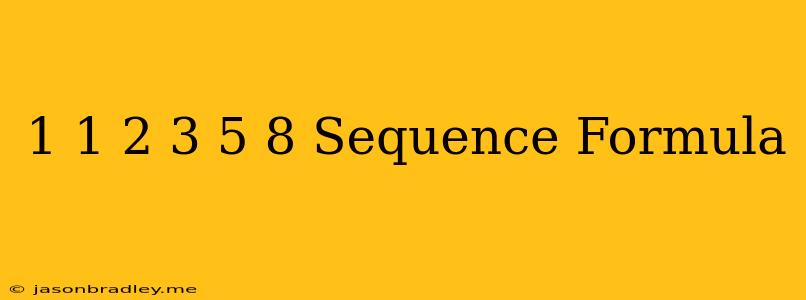The Fibonacci Sequence: A Dive into the Formula and Its Applications
The sequence 1, 1, 2, 3, 5, 8... is known as the Fibonacci sequence. This seemingly simple sequence has fascinated mathematicians and scientists for centuries due to its unique properties and surprising appearances in nature.
What is the Fibonacci Sequence?
The Fibonacci sequence is a series of numbers where each number is the sum of the two preceding ones. It starts with 0 and 1, and continues as follows:
0, 1, 1, 2, 3, 5, 8, 13, 21, 34, 55, 89, 144…
The Formula
The Fibonacci sequence can be described by the following recursive formula:
F(n) = F(n-1) + F(n-2)
Where:
- F(n) represents the nth term in the sequence.
- F(n-1) represents the term preceding the nth term.
- F(n-2) represents the term two terms before the nth term.
This formula means that each number in the sequence is calculated by adding the two numbers before it. For example, to find the 6th term (F(6)), we add the 5th and 4th terms: F(5) + F(4) = 5 + 3 = 8.
Applications of the Fibonacci Sequence
The Fibonacci sequence appears in many areas of mathematics, science, and even art and nature. Some notable applications include:
- Mathematics: The Fibonacci sequence is related to the Golden Ratio (approximately 1.618), a mathematical constant found in various natural and artistic forms.
- Computer Science: The Fibonacci sequence is used in algorithms for searching, sorting, and data structures.
- Biology: The number of petals on a flower often follows the Fibonacci sequence, as well as the arrangement of leaves on a stem.
- Art and Architecture: The Golden Ratio, derived from the Fibonacci sequence, is used in design principles to create aesthetically pleasing proportions.
The Golden Ratio
The Golden Ratio, represented by the Greek letter phi (φ), is approximately 1.618. It is closely connected to the Fibonacci sequence because the ratio of consecutive Fibonacci numbers approaches the Golden Ratio as the sequence progresses.
F(n+1) / F(n) ≈ φ
This relationship leads to fascinating applications of the Fibonacci sequence and the Golden Ratio in art, architecture, and design, as the proportions and ratios derived from them create aesthetically pleasing and visually harmonious forms.
Conclusion
The Fibonacci sequence, with its simple yet powerful formula, demonstrates the beauty and interconnectedness of mathematics within various fields. Its presence in nature and applications in various disciplines highlight its significance in understanding the patterns and structures that govern our world.
